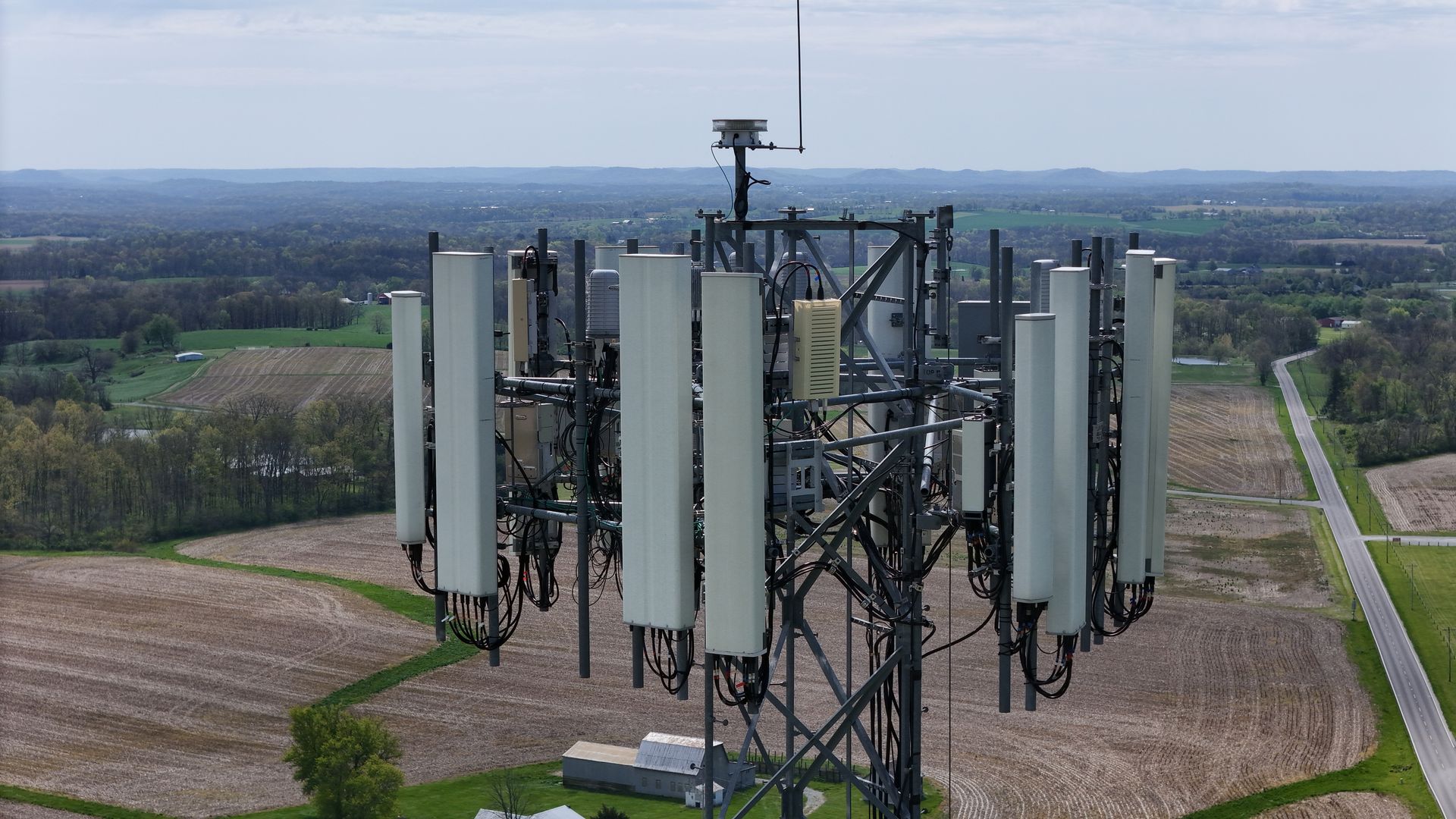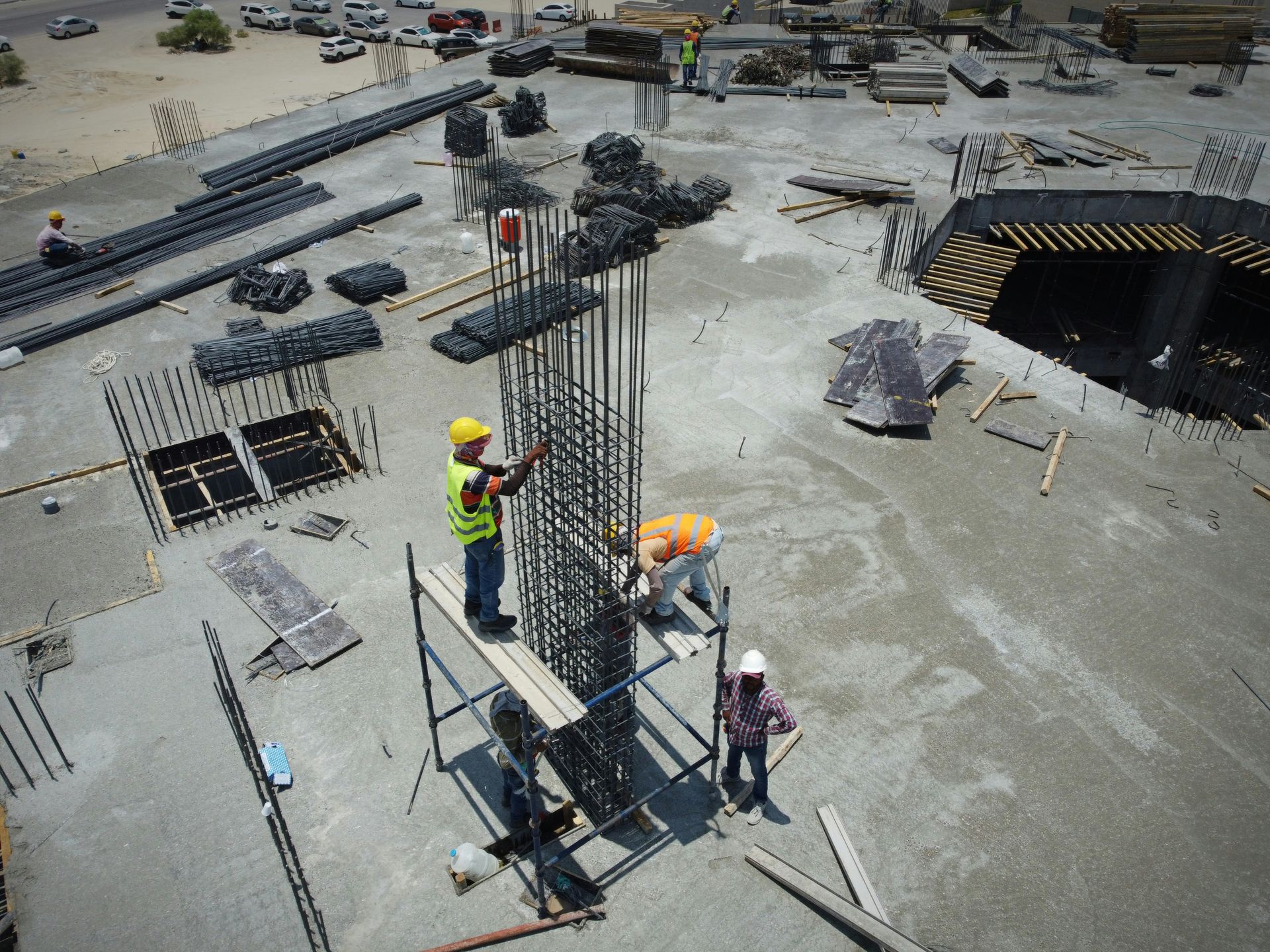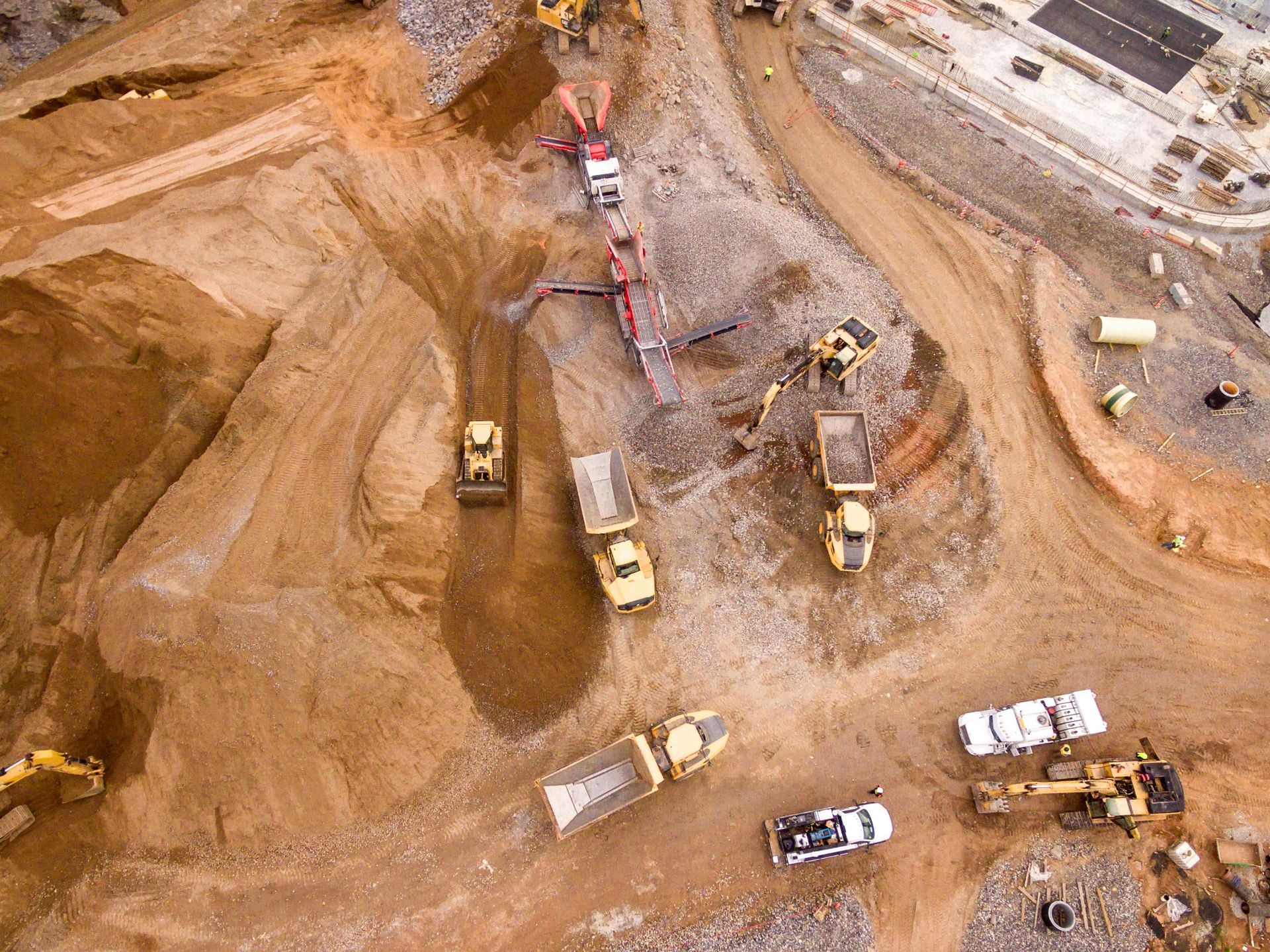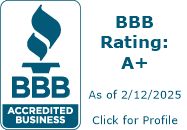Columbus Thermal Imaging for Building Inspection Excellence
Thermal imaging for building inspection in Columbus is changing the game for property owners and managers.
Specialists use special infrared gear.
It helps them find hidden problems that you can't see with your eyes, catching small issues before they blow up into big headaches.
If you manage a building in Columbus, considering thermal imaging services can really pay off.
Ready to view your construction project from new heights?
Contact 1st Choice Aerials today to schedule your aerial photography, inspection, or thermal imaging service!
On This Page:
What Is Thermal Imaging and How Does It Work?
Modern inspection methods heavily depend on thermal imaging.
Specialized cameras identify minute thermal anomalies, providing crucial data for assessments.
With these cameras, you get a clear picture of how hot or cold different parts of a building are.
This 'heat vision' is essential for figuring out if a place is in good shape.
During a home inspection, this heat-sensing camera quickly spots where warmth escapes, finds hidden water problems, and points out potential electrical dangers, all without making a single cut.
We won't drill holes.
We won't tear down walls.
Your daily routine?
It stays exactly as it is.
Discovering Issues: Thermal Cameras in Your Columbus Home Inspection
Thermal cameras are incredibly flexible.
They assist with many different kinds of building inspections all over Columbus.
What we learn from any property, big or small, holds serious value.
We don't just use a standard checklist.
We consider the home's age, its specific build, and any past work done, making sure the inspection fits that one place perfectly.
Residential Inspections
For homeowners and homebuyers in Columbus, thermal imaging during a home inspection offers a deeper understanding of a property's condition.
It often uncovers problems that are entirely invisible during a quick, standard look.
You'll make much better choices when you know all the facts.
Specific findings in residential inspections can include:
- Poor or missing insulation in walls, ceilings, and attics.
- Water leaks and plumbing leaks originate from roofs, basements, or plumbing fixtures.
- Infrared electrical inspections - Checking overheating electrical outlets, circuits, or panel components.
- Potential pest infestations (as some pests generate discernible heat signatures).
- Air leakage around windows, doors, and other openings affecting energy efficiency.
- During a chimney inspection, technicians frequently discover critical flaws such as obstructive deposits or structural breaches in the flue liner. These conditions impede efficient heat transfer and, more seriously, pose a significant risk of carbon monoxide leakage into living spaces. Finding carbon monoxide leaks quickly keeps everyone safe.
- Broken seals in double or triple-pane windows reducing their insulating properties.
Armed with this knowledge, buyers can bargain for needed repairs or a better price.
For current owners, it points out exactly what upkeep and improvements to consider.
Commercial Building Infrared Inspections
In commercial settings, thermal imaging for building inspection in Columbus offers an even broader array of applications due to the complexity and scale of commercial properties.
For building managers, keeping things efficient and safe has just become simpler, thanks to this inspection technology.
Infrared thermographic surveys can quickly cover extensive areas.
Key uses in commercial property inspections include:
- Energy audits and HVAC system efficiency checks, identifying duct leaks or inefficient units.
- Flat roof inspections to detect water pooling, trapped moisture, or compromised membrane integrity before major roof leaks occur.
- Data center cooling system evaluations to prevent overheating of critical IT electrical equipment.
- Industrial equipment maintenance, spotting overheating motors, bearings, or other mechanical systems.
- Assessment of the building envelope for air infiltration and exfiltration, crucial for large structures.
- Verification of proper installation and performance of insulation in new constructions or retrofits.
Large commercial properties can achieve significant operational cost savings and prevent costly downtime through regular infrared thermal imaging inspections.
Effective facility management involves identifying and addressing issues promptly.
Imaging services help you do just that.
Choosing a Thermal Imaging Inspector in Columbus

When selecting a professional for thermal imaging building inspection in Columbus, several factors must be considered to get reliable and accurate results.
Certification and Training
Look for inspectors who hold certifications from reputable organizations such as the Infrared Training Center (ITC) or the American Society for Nondestructive Testing (ASNT).
Certifications like Level I, Level II, or Level III Certified Infrared Thermographer indicate that the inspector has received formal training in thermal imaging principles, advanced infrared technology, equipment operation, and image analysis.
Experience with Columbus Buildings
Select an inspector who is familiar with the diverse architectural styles and common construction challenges encountered in Columbus buildings.
When an inspector truly knows the area, they're better at spotting issues.
They understand Columbus building codes, common construction flaws in the area, and how our weather affects a home's structure.
An inspector with local experience will also be better equipped to provide relevant recommendations for remediation.
Quality of Equipment
Ask about the type and specifications of the thermal camera the inspector uses.
Better thermal cameras with more pixels give you a much clearer view.
You can then pick out the smallest temperature changes and any subtle signs of trouble.
Key camera specifications include detector resolution, thermal sensitivity (NETD – Noise Equivalent Temperature Difference), and the temperature range it can measure.
The quality of the equipment directly influences the accuracy and comprehensiveness of the thermal imaging inspection.
Range of Services Offer
Consider whether the inspector or inspection company offers other relevant services that you may need.
You might spot a hot area with thermal technology, but then you'll need another device, like a moisture meter, to truly understand the problem.
For example, if moisture is detected, further radon testing might be advisable, or if foundation concerns arise, a sewer scope inspection could be beneficial.
When a company handles all kinds of inspections, they give you a full picture of your property.
The Inspection Process
A typical thermal imaging inspection in Columbus is a systematic process designed to thoroughly assess a building.
By learning the different steps, property owners can prepare and understand what's coming their way.
The general stages of an infrared inspection include:
- Initial Consultation and Walkthrough: The inspector will discuss your concerns and the building's history. First, a quick look around helps us pinpoint the main spots and map out the best way to scan.
- Thermal Imaging Scan: The inspector uses a thermal camera to scan the building's exterior and interior surfaces. This is often done under specific environmental conditions (e.g., a certain temperature difference between inside and outside) to maximize the visibility of thermal anomalies related to heat loss or moisture.
- Image Analysis: The captured thermal images are carefully analyzed. The pro on site checks for any weird temperature changes. Hot or cold patches can tell a story: maybe the insulation's shot, air's escaping, water's hiding, or something electrical is burning up.
- Detailed Reporting: All the details will be in the report you receive from us. Here's what you'll typically find in this report: those special thermal pictures, the matching regular photos, a breakdown of what we discovered, and our ideas for fixing issues or checking things out further.
- Let's talk soon about your next steps. Your inspector can arrange a post-inspection consultation. This meeting offers a chance to thoroughly review the findings, address all your inquiries, and clarify the appropriate next steps. You'll totally get what the thermal scan is telling you.
The entire process duration can vary, typically taking a few hours, but this depends significantly on the size and complexity of the building being inspected.
Cost Considerations for Thermal Imaging Inspections

The cost of thermal imaging for building inspection in Columbus can vary based on several factors.
Factors influencing the cost include:
- Size of the Property: Larger buildings naturally require more time and effort to inspect thoroughly.
- Type of Building: Commercial inspections for large or complex commercial property structures may be more expensive than residential inspections due to scale and specialized systems like extensive electrical equipment or mechanical systems.
- Scope of the Inspection: A basic scan for energy loss will differ in cost from a comprehensive thermal inspection that includes electrical systems, moisture detection, and roofing.
- Experience Level of the Inspector: Highly experienced and certified infrared thermographers may charge more for their expertise.
- Reporting Requirements: The level of detail required in the inspection reports can also affect the price. Some property owners or insurance companies might require highly detailed documentation.
While prices can range from a few hundred dollars for a basic residential scan to several thousand for extensive thermographic surveys of commercial facilities, the return on investment is often significant.
Predicting how infrared devices will redefine structural evaluations
Infrared technology continues to improve, so expect to see it used more frequently in Columbus building inspections.
Clever new techniques will soon uncover a building's operational effectiveness and its true state of repair.
Future developments likely to enhance thermal imaging inspections include:
- Integration with Drones: Drones equipped with high-resolution thermal cameras are making the inspection of large roofs, tall building exteriors, and hard-to-reach areas safer, faster, and more cost-effective.
- Artificial Intelligence (AI) and Machine Learning: Smart computer programs will soon automatically scan heat pictures. They'll quickly spot anything out of place and even guess what might break later just by watching how temperatures behave.
- 3D Thermal Mapping: The ability to create 3D thermal models of buildings will offer a more comprehensive and intuitive way to visualize heat loss, moisture problems, and other defects throughout an entire structure.
- More Affordable and Accessible Handheld Devices: As thermal cameras become more compact and less expensive, they may become standard tools for a wider range of building professionals, enabling quick, on-the-spot thermal scans during routine maintenance or preliminary assessments.
- Enhanced Software Integration: Future software will likely offer improved integration with Building Information Modeling (BIM) systems, enabling thermal data to be seamlessly incorporated into the overall management and maintenance of commercial inspection programs.
Conclusion
Whether you are a homeowner concerned about heat loss, a property manager overseeing a large commercial property, or a building professional involved in construction or renovation in Columbus, incorporating thermal imaging into your inspection practices is a wise move.
Worried about unseen electrical faults?
An infrared or thermal inspection finds them.
This saves you cash, prevents serious damage, and brings calm reassurance.
Consider scheduling an inspection today to understand the true condition of your property; experienced inspectors are ready to assist with these vital inspection services.
Ready to view your project from new heights?
Contact 1st Choice Aerials today to schedule your aerial photography, inspection, or thermal imaging service!





